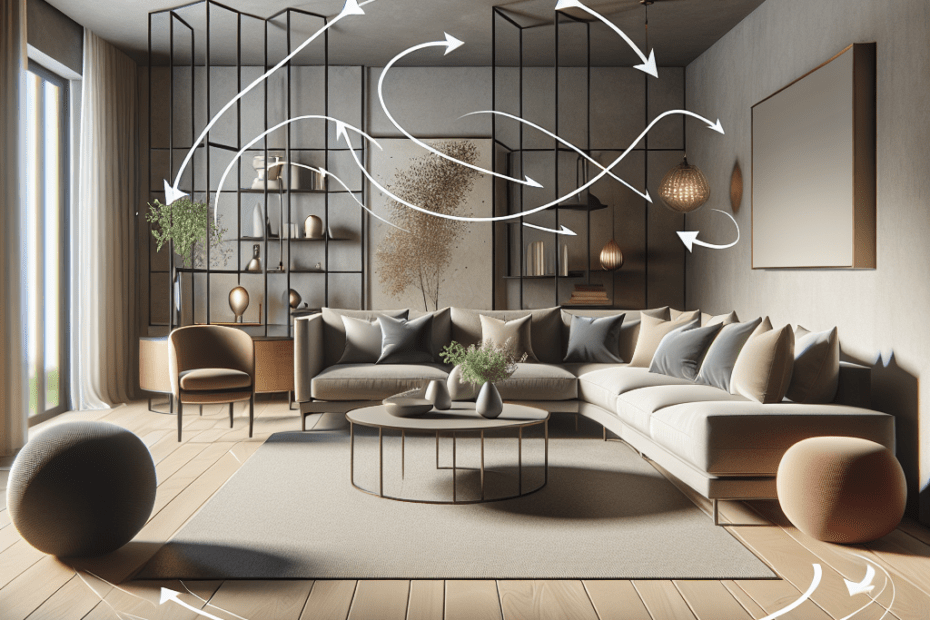The Impact of Curved Furniture on Room Flow
When homeowners and designers start thinking about room layout, they often focus on how to arrange the furniture to maximize space and create a good flow. Now, there’s a new trend on the block. Curved furniture in design is becoming increasingly popular and for very good reason. It introduces a whole new dynamic to room flow, enhancing both the aesthetic appeal and functional utility of a space.
Some designers have noticed that curved furniture can dramatically change the energy of a room. The arcs and bends in tables, chairs, and couches create a more organic, fluid feeling, which allows rooms to feel less rigid.
Why Choose Curved Furniture?
Curved furniture in design is more than just stylish—it offers practical benefits. Curved pieces often allow for better movement through spaces because they soften hard edges and reveal more space, making rooms appear larger. The fluid shapes can also guide people naturally through a room, reducing awkward corners and dead zones.
According to a study from the Journal of Environmental Psychology, people are more drawn to curved lines because they evoke feelings of comfort and relaxation. When they added curved furniture into room designs, they found that spaces felt more inviting and open (source: Journal of Environmental Psychology, 2022).
Statistics on Curved Furniture Appeal
| Design Feature | Percentage of Preferences |
|---|---|
| Curved Lines | 65% |
| Straight Lines | 35% |
The table above highlights that a significant percentage, 65%, of consumers prefer curved lines over straight lines when choosing furniture, as per a survey conducted by Interior Design Institute in 2023.
Improving Room Flow with Curved Furniture
Curved furniture can greatly improve the flow of a room. Instead of forcing people to navigate around hard edges, curves allow for easier movement and can direct foot traffic naturally. It can be particularly useful in small spaces where maximizing every inch is crucial.
For example, placing a curved sofa in the corner of a room can provide seating without blocking pathways, making it easier for everyone to move around. Additionally, curved furniture can often be placed more flexibly, which adds versatility to any space.
Versatility and Visual Interest
Another benefit of curved furniture in design is its visual interest. Curved furniture often acts as a focal point in the room, drawing the eye and harmonizing with other furniture pieces, textures, and colors. Because they are different from traditional straight-lined furniture, they add character and a unique aesthetic appeal.
Furthermore, many designers appreciate how curved furniture can work with diverse styles. Whether they lean towards a contemporary, modern, or classic look, curves can complement and even enhance the stylistic elements of any room.
Key Takeaways
- Curved furniture improves room flow by softening edges and allowing easier movement.
- People prefer curved lines as they are perceived as more inviting and comfortable.
- With 65% of consumers favoring curved designs, it’s clear this trend is on the rise.
- Curved designs are versatile and add visual interest to any room.
FAQs about Curved Furniture in Design
- What makes curved furniture appealing?
Curved furniture appeals due to its organic lines which make rooms feel more inviting and less rigid.
- Can curved furniture work in small spaces?
Yes, curved furniture can maximize space effectively and improve flow even in smaller rooms.
- Is curved furniture only suitable for modern designs?
No, it can complement various styles from contemporary to classic, making it very versatile.
- How does curved furniture impact room flow?
It allows for a smoother movement within the room, reducing blockages and directing foot traffic effortlessly.
- Is curved furniture a growing trend?
Yes, with its increasing consumer preference, curved furniture design is becoming more prevalent in homes and businesses.
